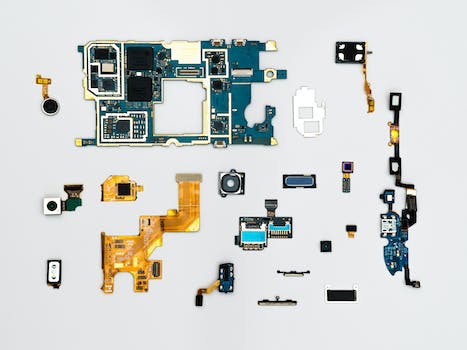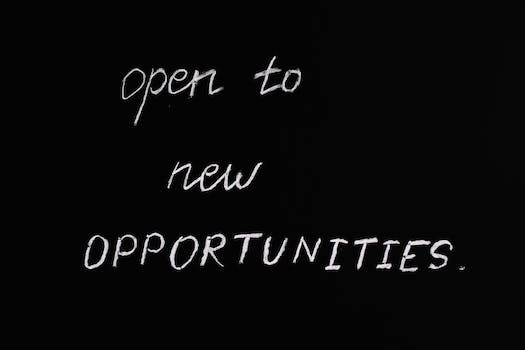How To Start A Art Business With No Money
“Transform your passion into profit with these budget-friendly tips for starting an art business.”
Introduction
Starting an art business can be a challenging task, especially if you have limited financial resources. However, with the right approach and strategies, it is possible to start an art business with no money. In this article, we will discuss some tips and tricks that can help you start your art business without breaking the bank.
Utilizing Social Media to Promote Your Art Business
Starting an art business can be a daunting task, especially if you don’t have a lot of money to invest. However, with the rise of social media, it’s easier than ever to promote your art and build a following without breaking the bank. In this article, we’ll explore some tips and tricks for utilizing social media to promote your art business and get your work in front of potential customers.
First and foremost, it’s important to choose the right social media platforms for your art business. While there are countless options out there, not all of them will be a good fit for your specific needs. Instagram, for example, is a great platform for visual artists, as it allows you to showcase your work in a visually appealing way and connect with potential customers through hashtags and direct messaging. Facebook, on the other hand, is a more general platform that can be useful for promoting events, sharing news and updates, and building a community around your brand.
Once you’ve chosen your platforms, it’s time to start creating content. This can include photos of your artwork, behind-the-scenes glimpses into your creative process, and updates on upcoming shows or events. It’s important to be consistent with your posting schedule and to engage with your followers by responding to comments and messages. This will help build a sense of community around your brand and keep your followers engaged and interested in your work.
Another key aspect of utilizing social media for your art business is to collaborate with other artists and brands. This can include participating in group shows, partnering with other artists for joint projects, or even teaming up with local businesses to showcase your work. By working with others in your community, you can expand your reach and tap into new audiences that may not have discovered your work otherwise.
In addition to collaborating with others, it’s also important to stay up-to-date on the latest trends and techniques in social media marketing. This can include learning about new features on your chosen platforms, experimenting with different types of content (such as videos or live streams), and staying on top of changes to algorithms and best practices. By staying informed and adaptable, you can ensure that your social media strategy remains effective and relevant over time.
Finally, it’s important to remember that social media is just one tool in your arsenal when it comes to promoting your art business. While it can be a powerful way to connect with potential customers and build your brand, it’s also important to explore other avenues such as local art shows, galleries, and word-of-mouth referrals. By combining a strong social media presence with other marketing strategies, you can create a well-rounded approach that maximizes your chances of success.
In conclusion, starting an art business with no money may seem like a daunting task, but with the right approach, it’s entirely possible to build a successful brand using social media. By choosing the right platforms, creating engaging content, collaborating with others, staying up-to-date on trends, and exploring other marketing strategies, you can create a strong and sustainable business that showcases your unique talents and connects you with a passionate community of art lovers.
Creating a Business Plan for Your Art Business

Starting an art business can be a daunting task, especially if you don’t have a lot of money to invest. However, with a solid business plan and some creativity, it is possible to start a successful art business without breaking the bank. In this article, we will discuss the importance of creating a business plan for your art business and provide some tips on how to get started.
The first step in starting any business is to create a business plan. A business plan is a written document that outlines your business goals, strategies, and financial projections. It is a roadmap that will guide you through the process of starting and running your art business. A well-written business plan will help you to identify potential challenges and opportunities, and it will also help you to secure funding if you need it.
When creating a business plan for your art business, there are several key elements that you should include. First, you should define your target market. Who are your ideal customers? What are their needs and preferences? Understanding your target market will help you to create products and services that meet their needs and preferences.
Next, you should define your unique selling proposition (USP). What makes your art business different from your competitors? What value do you offer to your customers that they can’t find elsewhere? Your USP should be clear and compelling, and it should be reflected in all of your marketing materials.
You should also include a marketing plan in your business plan. How will you promote your art business? What channels will you use to reach your target market? Will you use social media, email marketing, or traditional advertising methods? Your marketing plan should be tailored to your target market and your budget.
Another important element of your business plan is your financial projections. How much money do you need to start your art business? What are your expected revenues and expenses? How long will it take for your business to become profitable? Your financial projections should be realistic and based on market research and industry benchmarks.
Once you have created your business plan, it’s time to start putting it into action. One of the best ways to start a successful art business with no money is to leverage your existing network. Reach out to friends, family, and colleagues who may be interested in your art and ask them to spread the word. You can also use social media to promote your art business and connect with potential customers.
Another way to start a successful art business with no money is to participate in local art shows and events. This will give you the opportunity to showcase your art and connect with potential customers. You can also offer your art for sale on online marketplaces like Etsy or eBay.
Finally, consider offering your art as a service. You can offer custom paintings, murals, or other art services to businesses or individuals. This can be a great way to generate income while building your portfolio and reputation.
In conclusion, starting an art business with no money is possible with a solid business plan and some creativity. By defining your target market, creating a unique selling proposition, developing a marketing plan, and projecting your finances, you can create a roadmap for success. Leveraging your existing network, participating in local events, and offering your art as a service are all great ways to start generating income and building your reputation as an artist. With hard work and dedication, you can turn your passion for art into a successful business.
Networking with Other Artists and Art Communities
Starting an art business can be a daunting task, especially if you don’t have a lot of money to invest. However, with the right mindset and approach, it is possible to build a successful art business without breaking the bank. One of the most important things you can do is to network with other artists and art communities.
Networking with other artists and art communities can help you in many ways. First, it can help you build relationships with other artists who can offer you advice, support, and inspiration. Second, it can help you find potential customers who are interested in your art. Third, it can help you learn about new opportunities and events in the art world.
So, how do you network with other artists and art communities? Here are some tips to get you started:
1. Attend art events and exhibitions
One of the best ways to meet other artists and art enthusiasts is to attend art events and exhibitions. Look for local art shows, gallery openings, and art fairs in your area. Attend these events and strike up conversations with other artists and attendees. Ask them about their work, their experiences, and their advice for starting an art business.
2. Join online art communities
In addition to attending in-person events, you can also join online art communities. There are many websites and social media platforms that are dedicated to artists and art lovers. Join these communities and participate in discussions, share your work, and connect with other artists. Some popular online art communities include DeviantArt, Behance, and ArtStation.
3. Collaborate with other artists
Collaborating with other artists can be a great way to build relationships and create new work. Look for artists who have a similar style or aesthetic to yours and reach out to them. Propose a collaboration project or offer to work on a piece together. This can help you learn new techniques, expand your portfolio, and build your network.
4. Volunteer at art events
Volunteering at art events can be a great way to meet other artists and art enthusiasts while also gaining valuable experience. Look for local art organizations or galleries that need volunteers for events or exhibitions. This can help you get your foot in the door and build relationships with people in the art community.
5. Attend workshops and classes
Attending workshops and classes can help you improve your skills and meet other artists who are interested in the same things as you. Look for local art schools or community centers that offer classes in your medium. Attend these classes and workshops and get to know your fellow students and instructors.
In conclusion, networking with other artists and art communities is an essential part of starting an art business. By attending events, joining online communities, collaborating with other artists, volunteering, and attending workshops, you can build relationships, find potential customers, and learn about new opportunities in the art world. So, get out there and start networking!
Selling Your Art Online through E-commerce Platforms
Starting an art business can be a daunting task, especially if you don’t have a lot of money to invest. However, with the rise of e-commerce platforms, it’s now easier than ever to sell your art online without breaking the bank. In this article, we’ll explore how you can start your own art business with no money by selling your art online through e-commerce platforms.
The first step in selling your art online is to choose the right e-commerce platform. There are many different platforms to choose from, including Etsy, Shopify, and Amazon Handmade. Each platform has its own pros and cons, so it’s important to do your research and choose the one that’s right for you.
Once you’ve chosen your e-commerce platform, it’s time to start creating your online store. This involves setting up your profile, uploading photos of your art, and writing product descriptions. It’s important to make sure that your store looks professional and showcases your art in the best possible way.
One of the biggest advantages of selling your art online is that you can reach a global audience. However, this also means that you’ll be competing with other artists from around the world. To stand out from the crowd, it’s important to focus on your unique selling points. This could be your style, your subject matter, or your use of materials. Whatever it is, make sure that you highlight it in your product descriptions and marketing materials.
Another important aspect of selling your art online is pricing. It can be tempting to underprice your art in order to make sales, but this can actually hurt your business in the long run. Instead, do some research to find out what other artists in your niche are charging for their work. This will give you a better idea of what your art is worth and help you set a fair price.
Marketing is also key to selling your art online. Social media is a great way to promote your art and connect with potential customers. Make sure that you have a strong presence on platforms like Instagram and Facebook, and use hashtags to reach a wider audience. You can also consider running paid ads on these platforms to drive traffic to your online store.
Finally, it’s important to remember that selling your art online is a marathon, not a sprint. It takes time and effort to build a successful art business, so don’t get discouraged if you don’t see immediate results. Keep creating and promoting your art, and eventually, you’ll start to see sales and success.
In conclusion, starting an art business with no money is possible thanks to e-commerce platforms. By choosing the right platform, creating a professional online store, highlighting your unique selling points, pricing your art fairly, marketing effectively, and being patient, you can build a successful art business and share your creativity with the world.
Offering Art Classes or Workshops to Generate Income
Starting an art business can be a daunting task, especially if you don’t have a lot of money to invest. However, there are ways to generate income without breaking the bank. One of the most effective ways to do this is by offering art classes or workshops.
Art classes and workshops are a great way to share your skills and knowledge with others while also generating income. Whether you’re a painter, sculptor, or photographer, there are people out there who are interested in learning from you. Here are some tips on how to get started:
1. Determine your niche
The first step in offering art classes or workshops is to determine your niche. What type of art do you specialize in? What skills do you have that you can teach others? Once you’ve identified your niche, you can start to develop a curriculum and marketing plan.
2. Choose a location
Next, you’ll need to choose a location for your classes or workshops. This could be your home, a community center, or a rented space. Consider the size of the space, the amenities available, and the cost when making your decision.
3. Set your prices
When setting your prices, consider the cost of materials, the length of the class or workshop, and your level of expertise. You may want to offer discounts for multiple classes or for students who bring their own materials.
4. Develop a marketing plan
To attract students, you’ll need to develop a marketing plan. This could include creating flyers or posters, advertising on social media, or reaching out to local schools or community organizations. Be sure to highlight your expertise and the benefits of taking your classes or workshops.
5. Start small
When starting out, it’s important to start small. Offer a few classes or workshops to gauge interest and refine your curriculum. As you gain experience and build a following, you can expand your offerings and increase your prices.
6. Build a community
Finally, it’s important to build a community around your art business. Encourage students to share their work and connect with each other. Offer opportunities for students to showcase their work, such as art shows or exhibitions. By building a community, you’ll create a loyal following and generate more business through word-of-mouth.
In conclusion, offering art classes or workshops is a great way to generate income and share your skills with others. By following these tips, you can start a successful art business with little to no money. Remember to start small, build a community, and always be open to feedback and improvement. Good luck!
Conclusion
Starting an art business with no money requires creativity, resourcefulness, and a lot of hard work. It is important to focus on building a strong brand, networking with other artists and potential customers, and utilizing free or low-cost marketing strategies. Additionally, consider offering services such as commissions or teaching classes to generate income while building your business. With dedication and perseverance, it is possible to turn your passion for art into a successful business venture.






